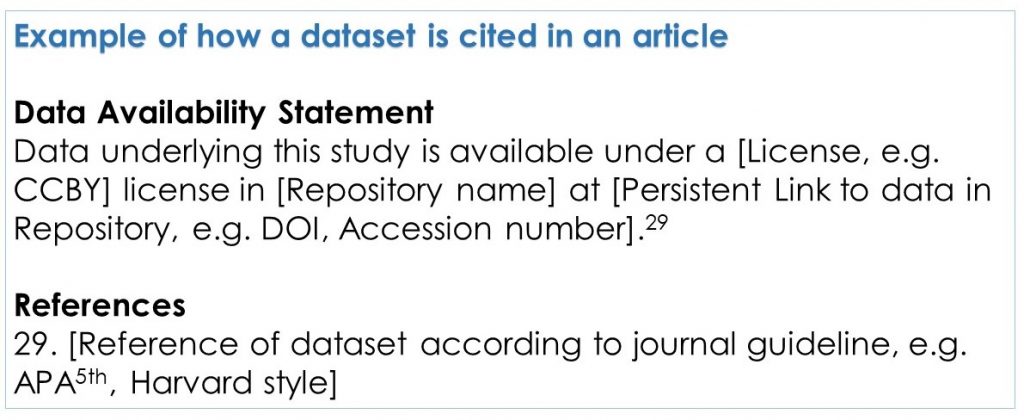Use the DOI to cite data
This is a short guide on best practices to cite data that is published with a Digital Object Identifier (DOI). Data published in a repository supporting FAIR data must have a DOI and a clear license. This ensures proper reuse of the data and credit to the data creator.
What is a DOI and how to use it with data?
A DOI is a type of Persistent Identifier (PID) that can be assigned and used for various research outputs. When the DOI is available, it is recommended to include it for citation purposes. When both a dataset and a related article have a DOI, the DOIs can be used to create persistent linkage between the two.
Below is an example of how to include a data citation in a scientific article. Here, the data is cited in the Data availability statement and in the Reference section of the article.

What should be included in a good data citation?
It is important to include the dataset DOI, when citing the data. The DOI act as an identifier and facilitates access to data. If possible, include the DOI as a complete URL. This will help users understanding that the DOI is also an URL and a link to a landing page that contains descriptive information about the dataset.
The graphic shows the minimum data citation information to include. Click on the yellow “i” to get more information.
Recommended references for data citation best practices
Publications Office of the European Union, Jessop, P., Data citation – A guide to best practice, Publications Office of the European Union, 2022 https://data.europa.eu/doi/10.2830/59387
Data Citation Synthesis Group: Joint Declaration of Data Citation Principles. Martone M. (ed.) San Diego CA: FORCE11; 2014 https://doi.org/10.25490/a97f-egyk
| Created by Jitka Stilund Hansen, https://orcid.org/0000-0002-5888-1221 | DTU Library | Published 2024 under CC BY-NC |